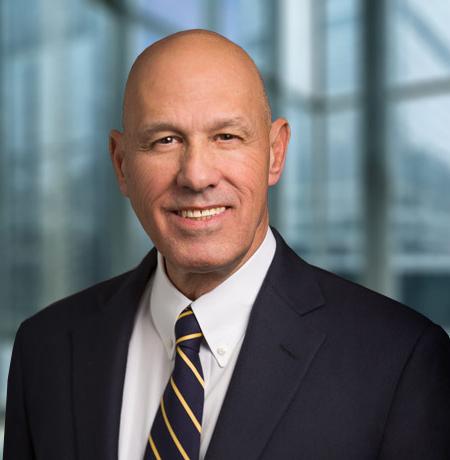On February 7, 2008, Walmart announced that it would open the first Walmart co-branded walk-in clinics at its stores in Atlanta, Dallas, and Little Rock, with plans to expand to 400 in-store clinics by 2010.
On August 8, 2014, Walmart announced it would expand on its existing five primary care centers to a total of 12 by the end of the year. These centers would offer more extensive services than those provided in Walmart walk-in clinics, including chronic disease management.
On September 13, 2019, Walmart announced it was opening the first expanded Walmart Health center, which would provide patients with primary care, laboratory, X-ray, EKG, counseling, dental, optical, and hearing services, with the “goal of becoming America’s neighborhood health destination.”
On April 30, 2024, Walmart announced it would close all 51 of its health centers in five states, as well as its virtual care services. “The challenging reimbursement environment and escalating operating costs create a lack of profitability that make the care business unsustainable for us at this time,” Walmart said.
Make no mistake, this announcement is a big deal. Walmart is the largest retailer in the world, with about $650 billion in annual revenue, 10,500 stores in 19 countries, and 2.1 million employees—nearly 1.6 million in the U.S. alone. Healthcare services were an important corporate goal for Walmart, a goal the company pursued with significant financial investment and talented executives. Walmart’s healthcare strategy was carefully mapped out, with an expanding set of services tested in various formats and locations in Walmart’s formidable geographic and online presence.
Of course, one of Walmart’s goals was to create profit for the company through its foray into healthcare. However, Walmart’s primary care strategy also held great promise for improving the health of the people Walmart serves, as well as reducing overall healthcare costs. A recent study by researchers at the University of Chicago Booth School of Business and University of Chicago Medicine, focusing on more than 500,000 Medicare beneficiaries, found that regular primary care visits were associated with fewer risk-adjusted ED visits and hospitalizations, lower risk-adjusted expenditures, and greater cost savings. According to the study, results improved as the regularity and continuity of care increased, both of which potentially would have been facilitated by the highly accessible and affordable primary care that Walmart aimed to deliver.
These benefits to patients and communities would have been especially powerful in rural America. Walmart plays a central role in the rural ecosystem, both as an economic and a social center. Ninety percent of the population is located within 10 miles of a Walmart. Four thousand of Walmart’s stores are located in HRSA-designated medically underserved areas. In a time when rural healthcare providers are struggling to remain viable and healthcare deserts are becoming more problematic, Walmart had a unique opportunity to be, as the company itself said, “the front door of healthcare for all Americans.” That enormous opportunity to tackle one of the most significant and persistent problems in American healthcare has now been lost.
Walmart is a corporation with a great history, a great reputation, great resources, and great operational abilities. If any company could make primary care work effectively and efficiently on a large scale in this country, it should have been Walmart.
But, after nearly two decades of trying, Walmart couldn’t succeed as a healthcare provider.
We can draw at least three important conclusions from Walmart’s healthcare failure.
- Healthcare as a cash business is a very difficult business model. Like other retailers, Walmart focused on healthcare as a cash business, providing high-volume, low-price services that consumers would pay for largely out-of-pocket. Walmart’s healthcare failure strongly indicates that, even with Walmart’s U.S. footprint of 4,615 stores and 255 million weekly customers, the company could not generate the volume necessary at acceptable price points to make cash healthcare profitable.
- It is unbelievably hard to work around the fundamental reimbursement model of American healthcare. Unable to make healthcare as a cash business work, the company ran smack into America’s unfriendly reimbursement system as its source of revenue. For Walmart as for many other healthcare providers, the predominant payers were Medicare and Medicaid, which, as every hospital executive experiences every day, do not pay at rates sufficient to cover costs—not a workable situation for a profit-oriented company in a capitalistic economy.
- Even a behemoth like Walmart could not manage around the current healthcare expense-to-revenue problem. Walmart is a company with all the tools any company could ask for to drive down operating expenses. It has the potential for economies of scale other companies could only dream of. It has processes for logistical efficiency that are viewed world-wide as a model of excellence. Yet even Walmart was unable to solve that most basic of healthcare economic problems: expenses—including labor, supplies, and drugs—are rising faster than revenue. Relatively few healthcare providers are able to achieve a positive margin in this environment, and for those that do achieve a margin, it is usually razor thin.
Obviously, healthcare’s business fundamentals are hard, and now we can see they are hard not only on traditional healthcare providers but also hard on a $650 billion retail company. These business fundamentals are unlikely to change anytime soon.
Walmart’s primary care failure is not only a disappointment for Walmart, but also for the healthcare ecosystem at large. What Walmart was trying to do was important, and that was establish a comprehensive retail system of primary care. Although Walmart’s effort, at least for the moment, has not worked, this is unlikely to be the end of the line. Hospitals and health systems will continue to experiment, will continue to apply their unique visions, their considerable talents, and their enormous dedication to the goal of finding primary care solutions that work for their communities. As the Walmart failure demonstrates, the challenge is incredibly difficult. But the game must not be over.
See the infographic of Walmart’s healthcare journey from Kaufman Hall’s Gist Weekly.








